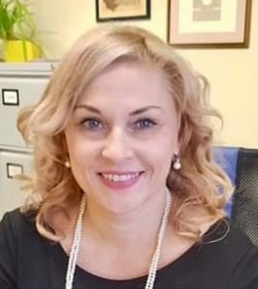WONCA Europe 2019- Dr Jana Bendová answers questions
 Dr Jana Bendová, member of the Scientific Committee for the coming WONCA Europe conference in Bratislava, answers questions about general practice n the Slovak Republic. She is a GP and chief expert for general medicine at the Ministry of Health.
Recently, you have become the chief expert for general medicine at the Ministry of Health of the Slovak Republic. Which solutions do you consider as today's most important ones?
Dr Jana Bendová, member of the Scientific Committee for the coming WONCA Europe conference in Bratislava, answers questions about general practice n the Slovak Republic. She is a GP and chief expert for general medicine at the Ministry of Health.
Recently, you have become the chief expert for general medicine at the Ministry of Health of the Slovak Republic. Which solutions do you consider as today's most important ones?
I believe that an important priority consists in strengthening primary health care in Slovakia, in line with WHO and WONCA recommendations. For years, general medicine in Slovakia has been sidelined and its position in the healthcare system even deteriorated. We currently face not only a lack of general practitioners (a shortage of over 500 GPs) but also their adverse age structure (the average age is 56 years and more than 21% of GPs are over 65 years). On the other hand, we cannot expect an improvement of this situation in the short term. The fact is that general medicine is very unattractive to medical graduates and the interest in entering a residential program is even declining. Therefore, radical steps need to be taken – to broaden the competencies of general practitioners, to improve the financing of general medicine and thus to make our specialty more attractive to current as well as future GPs.
The theme of the 24th WONCA Europe conference is "General Practice: the Human Side of Medicine"
How will eHealth help in general medici ne humanisation – and will it help?
ne humanisation – and will it help?
The eHealth project in Slovakia has been in preparation for 10 years and it started as of 1 January 2018. At the beginning, healthcare providers have had to tackle many technical, implementation and financial problems... After 10 months of eHealth, we can say that it has begun to bring benefits in the form of electronic prescriptions that no longer need to be printed. General practitioners issue the most prescriptions from among all specialties, so they welcome this positive change very much. At the same time, electronic prescriptions contribute to patient safety.
You have not resigned from your GP job in a rural area of western Slovakia. What impulses does everyday practice provide for solving the "big" problems of general medicine?
I am convinced that, it is extremely important to have constant contact with practice and not just solve problems from the table. On the contrary, the everyday reality and the problems I encounter in my general practice motivate me a lot to act and to do everything possible to make the planned positive changes happen.
A general practitioner is at the beginning of patient care, a specialist at the very end. And, in your opinion, practical medicine is in the shadow. How can it come back to the place that it belongs to?
... These barriers are artificial, diagnostic barriers and also treatment barriers. I would like to explain this with an example – general practitioners in Slovakia cannot order the very basic examination for diabetes mellitus management – namely glycated haemoglobin. At the same time, GPs cannot provide the necessary care because they cannot prescribe anti-diabetic medications. This also goes for other chronic diseases, such as the ischemic heart disease, bronchial asthma, COPD...
My vision is to gradually move general medicine in Slovakia from the shadow to the bright sunlight, to approach to the standard of countries such as Denmark or the Netherlands, where general medicine is really the cornerstone of the health system and where general practitioners and their teams can solve more than 90% of patients´ concerns.
What does the human side of medicine mean to you personally?
To me, a general practitioner is not only a doctor, but also a psychologist, a social worker, and sometimes even a “priest” for his “sheep” – when he patiently listens to their “confessions” and it makes them feel relieved. After that, he does not have to issue either any prescriptions or any referral letters. Patients value their general practitioners not only because medication prescription but also for their advice – what to eat, how to exercise or how to stop smoking, or for example, for a suggestion to take a few days off.
The relationship of general practitioners with their patients evolves over the years as they go with them through their serious and less serious illnesses, their divorces, their grieving over their relative´s deaths, as well as the cheerful moments of their lives. These all brings them closer together. Let us understand that our patients are not only “collections of diseases” but human beings. They do not only have their bodies but also their souls.